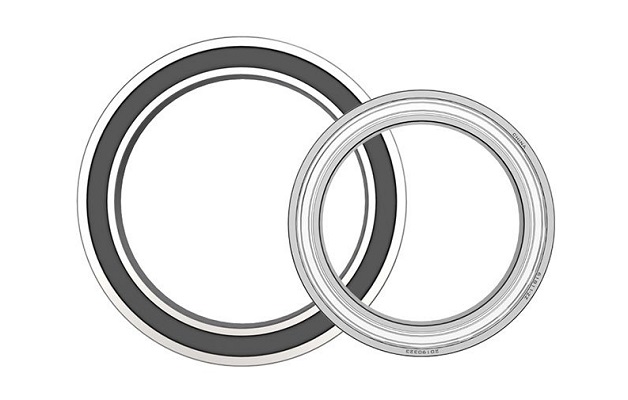Thin wall ball bearing
In order to obtain low friction torque, high rigidity and good rotation accuracy of the bearing, a steel ball with small outer diameter is used. The use of hollow shaft ensures lightweight and wiring space. Thin wall ball bearing not only realizes the extremely thin bearing section, but also realizes the miniaturization and lightweight of products. The diversity of products expands its scope of use.

The thin-wall 6700 and 6800 series have a complete range of dust cover forms, flange forms, stainless steel forms, wide forms, etc.
Bearing installation and removal
Different kinds and sizes of thin-walled deep groove ball bearings have different installation methods and tools, including mechanical or hydraulic ones. Here are some general basic installation methods and precautions.
First, do not install hard on the ball, which will lead to local overload of the ball and contact surface and premature failure of the bearing.
Second, do not hit the surface of the bearing with hard tools, such as hammer and screwdriver, which will break or embrittle the outer ring of the bearing.
Thin wall ball bearing cleaning
A clean service environment is very important for bearings. The surface roughness accuracy of the rotating surface of the thin-walled deep groove ball bearing ring and the rolling element is about 1 / 10 μ m. If such a smooth ball surface is polluted, its influence is very serious. The lubricating layer between rolling surfaces is usually 0.2 ~ 1 μ m.
Granular impurities larger than the lubricant particle size will be over rolled by the rolling elements and produce local pressure in the self-aligning roller bearing steel, which will eventually lead to permanent material fatigue.
In addition to this, the size of dust particles in the external environment can reach 10 μ m. It will also damage the self-aligning roller bearing. Because of this, how important a clean and tidy working environment is for bearings.
Process inspection of bearing
During use, the working temperature of the bearing is sensed by heat drying. If the temperature exceeds the specified limit, it will automatically alarm to prevent the occurrence of combustion shaft. High temperature often indicates that the bearing is in an abnormal condition. High temperatures are also harmful to bearing lubricants.
Sometimes the overheating of Thin wall ball bearing can be attributed to the lubricant of the bearings. If the temperature of the bearing exceeds 125 ℃ for a long time, the service life of the bearing can be reduced. The causes of high-temperature bearing include: the bearing may have insufficient lubrication, unqualified lubricant, impurities in it, insufficient clearance in the bearing when the load is too large, friction caused by oil seal, etc.






